
Epacris impressa, also known as common heath, is a plant of the heath family, Ericaceae, that is native to southeast Australia. French botanist Jacques Labillardière collected the species in 1793 and described it in 1805. Four forms have been identified, but no subspecies are recognised. Growing in heathland, shrubland or open forest, it is generally a small shrub around 0.5 to 1 m tall, with small stiff leaves. The red, pink or white tube-like flowers appear from late autumn to early spring. Honeyeater birds, particularly the eastern spinebill, feed upon the nectar of the flowers. It regenerates after bushfire by seed or by resprouting.

Acacia penninervis, commonly known as mountain hickory wattle, or blackwood, is a perennial shrub or tree is an Acacia belonging to subgenus Phyllodineae, that is native to eastern Australia.

The impressed tortoise, occurs in mountainous forest areas in Southeast Asia mainly in Myanmar Burma, southern China, Thailand, Laos, Vietnam, Cambodia, Malaysia and Northeast India. The species has a golden brown shell and skin. Adults are much smaller than their relatives the Asian forest tortoise, with a maximum size of 35 cm (14 in) carapace length.
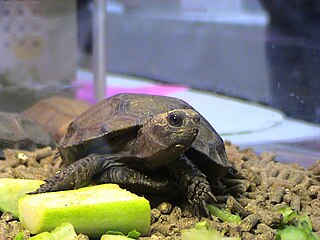
Manouria is a genus of tortoises in the family Testudinidae. The genus was erected by John Edward Gray in 1854.
The constricted elimia, scientific name †Elimia impressa, was a species of freshwater snail with a gill and an operculum, an aquatic gastropod mollusk in the family Pleuroceridae. This species was endemic to the United States.
Nectandra impressa is a species of plant in the family Lauraceae. It is endemic to Brazil.

Grevillea obtecta is a spreading shrub which is endemic to Victoria, Australia. It is known by the common names Fryerstown grevillea, Elphinstone grevillea, or Taradale grevillea. It grows to 0.5 metres in height and about 1.2 m in width The flowers, which are light green to yellow, appear between August and November in its native range.

Boonea is a small genus of small sea snails, pyramidellid gastropod mollusks.

Acronicta impressa, the impressive dagger moth or willow dagger moth, is a moth of the family Noctuidae. The species was first described by Francis Walker in 1856. It is found from western Canada to north-western Mexico.
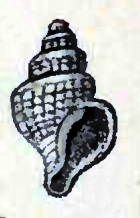
Oenopota impressa is a species of sea snail, a marine gastropod mollusk in the family Mangeliidae.
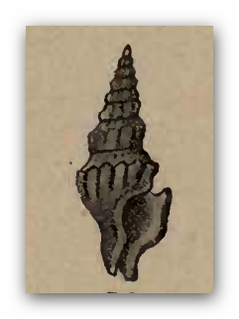
Kylix impressa is a species of sea snail, a marine gastropod mollusk in the family Drilliidae.

Spiders are air-breathing arthropods that have eight legs, chelicerae with fangs generally able to inject venom, and spinnerets that extrude silk. They are the largest order of arachnids and rank seventh in total species diversity among all orders of organisms. Spiders are found worldwide on every continent except for Antarctica, and have become established in nearly every habitat with the exceptions of air and sea colonization. As of July 2019, at least 48,200 spider species, and 120 families have been recorded by taxonomists. However, there has been dissension within the scientific community as to how all these families should be classified, as evidenced by the over 20 different classifications that have been proposed since 1900.
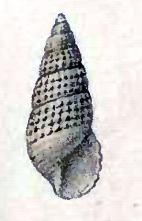
Boonea impressa, common name the impressed odostome, is a species of sea snail, a marine gastropod mollusk in the family Pyramidellidae, the pyrams and their allies. The species is one of twelve known species within the Boonea genus of gastropods.
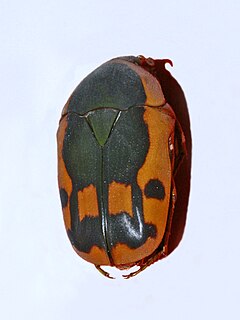
Pachnoda impressa, the green and yellow fruit chafer, is a species of beetles of the family Scarabaeidae and subfamily Cetoniinae.
Orthobula is a genus of araneomorph spiders first described by Eugène Simon in 1897 as a member of Liocranidae. It was transferred to Corinnidae in 2002, to Phrurolithidae in 2014, and to Trachelidae in 2017.

Phylloneta is a genus of comb-footed spiders formerly considered a sub-genus of Allotheridion, and raised to genus status in 2008. The type species was first described by Eugen von Keyserling in 1884 as Theridion pictipes. As of September 2019 it contains three species and two subspecies with a holarctic distribution: P. impressa, P. pictipes, P. sisyphia, P. s. foliifera, and P. s. torandae.

Phylloneta sisyphia, the mothercare spider, is a species of comb-footed spider from the genus Phylloneta.
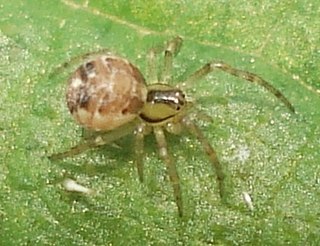
Phylloneta impressa is a species of comb-footed spider from the genus Phylloneta with a Holarctic distribution.
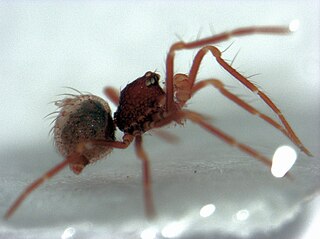
Taphiassa is a genus of spiders in the family Anapidae. It was first described in 1880 by Simon. As of 2017, it contains 6 species.














